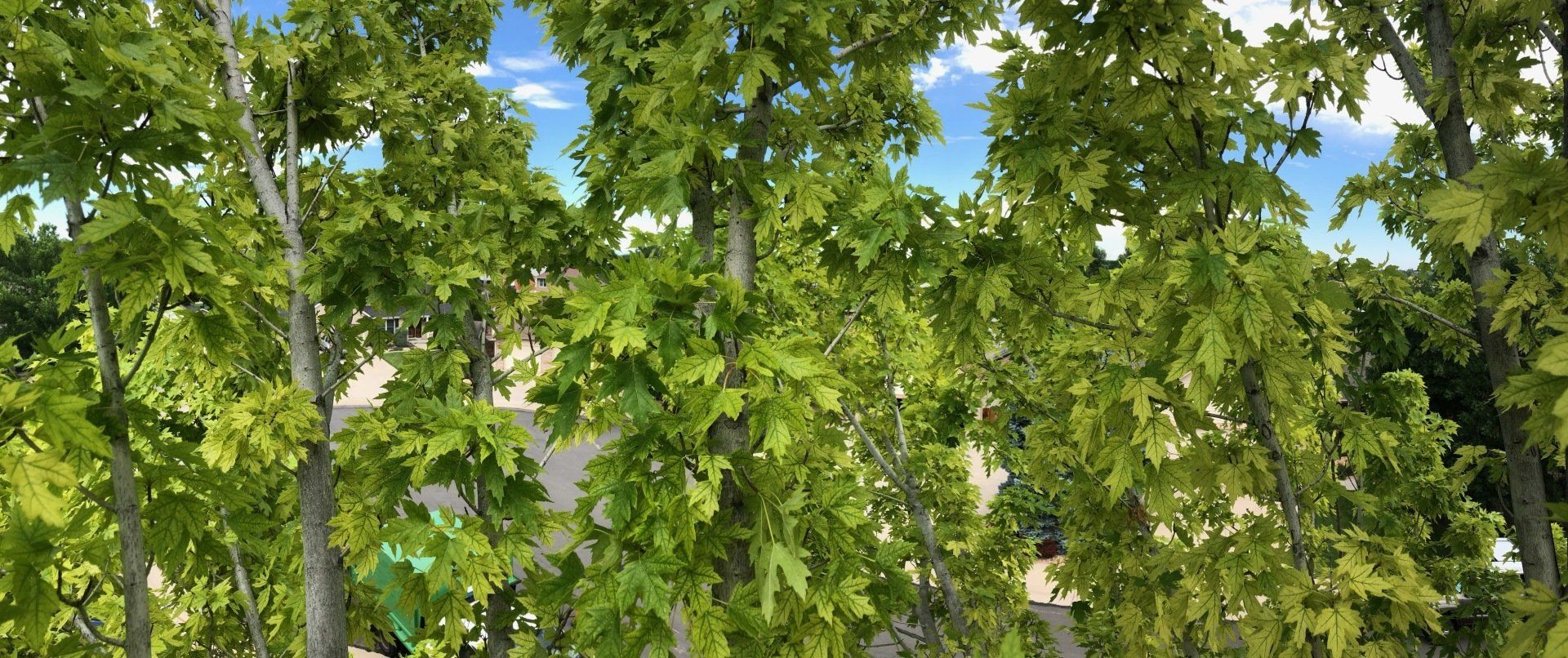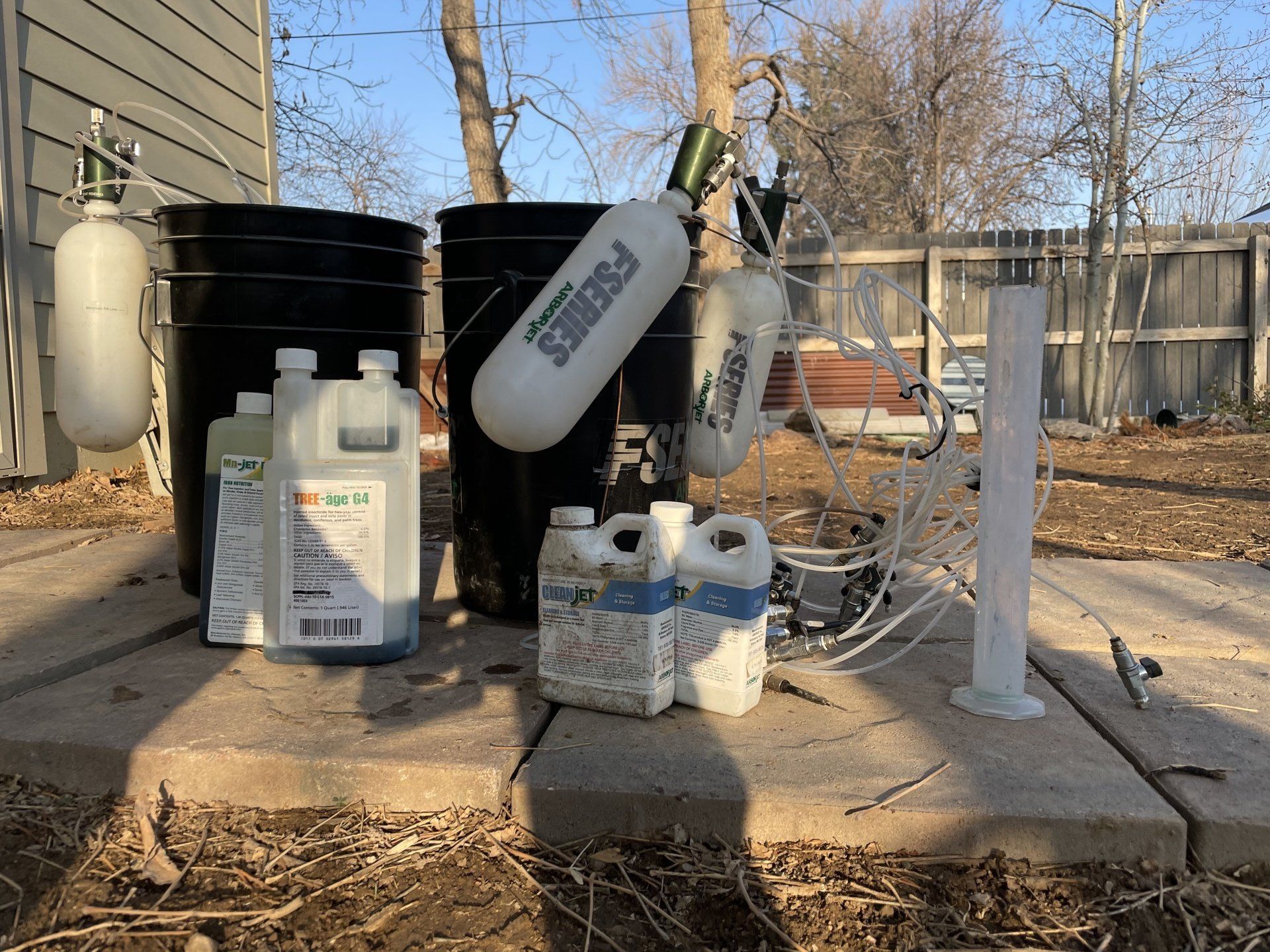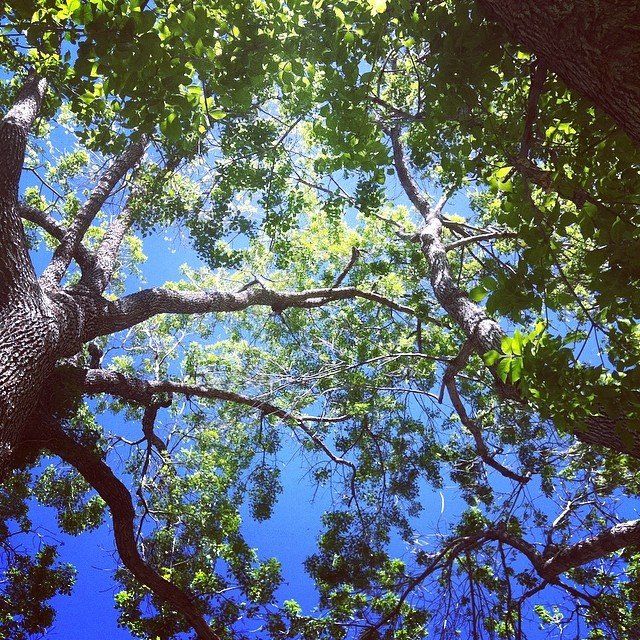Emerald Ash Borer
Lucas Capachin Board Certified Master Arborist RM-7913B
Emerald Ash Borer (EAB) is an incredibly damaging pest to North American forests. EAB was introduced from Asia, and since it has no natural predators it has killed every single untreated ash tree in its path. The insects. Ash trees are a breeding ground for the insects and can kill a tree within a few years and usually as soon as an infestation is noticed it is usually too late.
-
Location and Year of EAB Discovery
Button
-
Small Gallery from EAB Larvae
ButtonThis was a gallery from a branch and it was likely one of the first insects that infected this tree. You can see the gallery is almost entirely closed up with only a small part of the "S" shaped gallery visible
-
EAB Gallery with Large Canker
ButtonThis was a large dead spot on the branch from just before the tree died. The dead spot (canker) on the branch is very large, likely because the tree was already stressed and almost half the branches cambium was killed by one gallery.
-
Branch Covered With Galleries
ButtonThis branch has several larvae in one area and it killed the branch completely in one year.
-
Adult EAB
ButtonAdult Beetle. So far they have been found in Boulder, Longmont, Gunbarrel, Niwot, Superior, Louisville, Lafayette, Broomfield, and Arvada.
-
"D" Shaped Emergence Hole
ButtonThis is not actually from EAB but it is another wood borer that leaves a very similar hole. If you see one of these on your ash it is not a good sign.
-
"S" Shaped Galleries
ButtonThis is the telltale sign of EAB damage. Other wood boring insects generally go in random directions EAB usually does an "S" down the branch until it pupates and emerges as an adult.
-
LAB Larvae
ButtonThese are not larvae from EAB but I havent gotten a photo of one yet so here is a filler photo of the second most damaging ash borer.
-
Extensive Galleries
ButtonThis is what happens when there are many larvae in one area. They destroy massive areas of the trees vascular tissue.
-
EAB infested ash
ButtonThis tree was at the post office at 55th and Valmont in Boulder, CO. This shows the typical pattern of EAB damage. Some tops are dead, some are declining, and some parts of the tree are still dense.
-
The Injection System
ButtonThis is the system used to inject the emmamectin. It is great because with this system all of the pesticide goes into the tree and does not end up killing bees or other non target organisms.




We have used them twice so far because of the great work they did the first time. They did exactly what we needed done to our trees, and when they are done, they leave the yard as clean or cleaner than when they had started.
Kristi M. (Lafayette, CO)
MashIt
Did a great job of removing trees without damage to surrounding plants. Did a great job of cleaning up afterwards. Very satisfied.
Button
"Lucas was timely, honest and super helpful. He didn't try to sell me any services other than what I called about, which I greatly appreciated. I'll definitely be using him again for pruning trees in the winter."
FabuFit
Lucas and his team were true professionals They were courteous, really knew what they were doing. Fun to watch! They cleaned up afterward, the whole yard even though their debris didn't cover the whole yard! Very reasonable pricing also. Highly recommend
Button
They were efficient, did a great job quickly and cleaned up the yard afterwards. Couldn't ask for more. Highly recommended.
YesSuits
" They were able to come in and grind down the large Cottonwood stump and remove the debris in a reasonable amount of time. Very pleased with their service and pricing that we hired them to remove another Cottonwood from our backyard."
Button
















